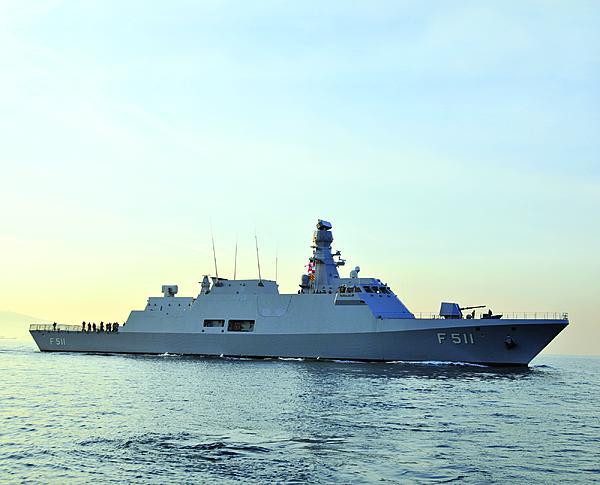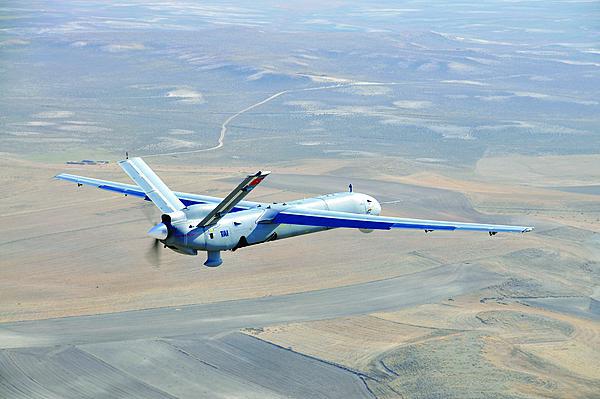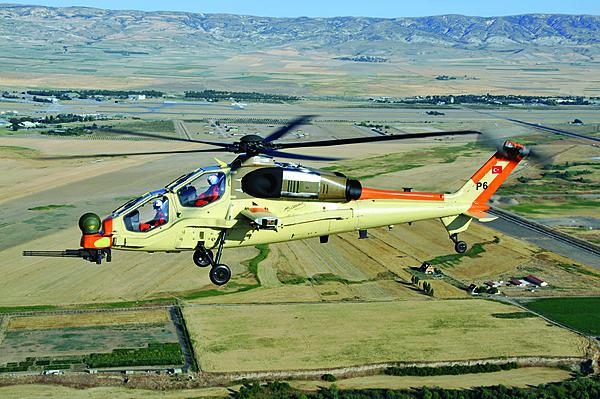Turkey's Companies Assume Larger Military Role
Strong relationships between the public and private sectors in the Mediterranean powerhouse are spurring domestic and international advancements.
Despite the global economic downturn, the Turkish defense market has been experiencing significant growth through modernization projects. A strategy by the government offers increased opportunities for the nation’s own industrial base to develop leading capabilities for the country’s armed forces. Simultaneously, ministry and company officials are expanding outreach to foreign allies to open their markets to Turkish goods.
During the past decade, Turkey has promoted commercial advantages in defense, aerospace and security. The country has two non-governmental organizations focused on expanding commercial opportunities for domestic businesses, one with an emphasis on local markets and another with responsibility for export support. These types of initiatives have helped Turkish industry enjoy a rapid and, officials believe, sustainable growth. One of the most successful companies in the country is ASELSAN, which is striving to improve national defense and security through many facets of its work. “We believe that the technological competitiveness of the Turkish defense industry, with increasing financial figures in revenues, is sustainable only through a full cooperation among the community,” says Cengiz Ergeneman, chief executive officer of ASELSAN.
He adds that an important example of that sustainment is through self-funded research and development (R&D), to which his company devotes approximately 7 percent of its annual revenue. When contracts for R&D work are included, that rate rose to 30 percent in 2011, accounting for $270 million. “Especially in the period of global financial crisis, it provides a momentum to the community that domestic business partners and subcontractors continue to actively do research and production,” Ergeneman explains. “Accumulated technological know-how is also another value added to the community through these activities.” However, financial resources and incentives for R&D are lower in Turkey than in North America or Europe, and few defense companies can maintain the stable cash flow and sufficient backlog necessary to support such investment and major, scheduled long-term defense programs.
The Undersecretariat for Defense Industries (SSM) of the Ministry of National Defense of Turkey released a five-year (2012-2016) strategic plan that outlines goals for the defense community and provides certain methodologies to meet them. Country officials are supposed to follow the guidelines strictly to help grow business in the country. As part of the effort to develop a stronger internal technology base, one goal is localization, but the government also aims to achieve export amounts of $2 billion by 2016. Lutfi Varoglu, head, International Cooperation, SSM, explains that goals were established after the government studied certain program models with industry, which gave the country an opportunity to develop new products.
Members of the Turkish government are reaching out to companies of all sizes in its effort to invest in domestic business. Varoglu explains that work with small and medium businesses especially benefits the economy.
The undersecretariat requires a minimum of 50 percent domestic industry participation in each of its programs, creating what Ergeneman calls a win-win situation for the Turkish defense community and foreign partners. That percent will grow through 2016, including an expected 30 percent distribution to Small-Medium Enterprises. Ergeneman explains that the effort assists the Turkish defense community “by obliging direct involvement of Turkish industry to the projects and also promoting technological development of a sustainable industry for future requirements.”
National expertise in specific technologies and projects crucial to the country’s security is important to Turkey as well. To promote this effort, companies are assigned to technology centers in relevant fields; ASELSAN participates in several. “This helps the industry to benefit from extracurricular funding, which would in return enhance indigenous capabilities of Turkey,” Ergeneman shares. The government additionally offers a wide variety of assistance for export activities, including marketing promotion incentives and consultancy services. These resources help grow subject matter experts in the international arena and encourage larger companies to enter new markets. The defense industry is working closely with government to establish mechanisms to facilitate exports because domestic markets are inadequate for sustaining any defense industry, Ergeneman says. ASELSAN works closely with the SSM in many efforts, including an increasing number of international exhibitions and tenders. They also have established a joint venture company between themselves and with Kazakhstan called Kazakhstan-ASELSAN Engineering. ASELSAN has realized international investments for more than a decade and created other joint ventures for technology transfer with the United Arab Emirates and Jordan.
Products sold by Turkish defense companies contribute to the decreasing foreign trade deficit, an important concern for Turkey’s national economy. ASELSAN has exported goods to 39 countries on five continents with active participation in NATO joint R&D and production programs through various means, according to Ergeneman. In 2011, 16 percent of ASELSAN’s revenue was realized as exports, with intentions to increase that to up to 25 percent by 2016. Ergeneman explains that according to market rankings, there has been a considerable increase in exports and a decrease in the imports of Turkish industry. “These figures are indicating both technological and commercial developments in Turkish defense industries,” he states. “Also, Small-Medium Enterprises, which we consider as our valuable strategic partners and give full support, have also achieved higher quality and performance levels in their activities.” ASELSAN assigns high importance to this issue and is working for the capability development of these partner enterprises. In 2011, a total of 338 domestic contractors, including 267 Small-Medium Enterprises, were paid $183 million for their work. This amount is approximately 20 percent of ASELSAN’s revenues. Total multiyear orders put into the enterprises and subcontractors exceeded $730 million.
The domestic defense industry additionally benefits the country in a less quantitative fashion. Companies employ highly qualified and experienced personnel, most of whom graduated from top universities in the country, so that the brain drain of the skilled work force not only is prevented but also is reversed.
In terms of concrete internal efforts, Turkey is advancing many defense projects for land, sea and air domains. The country’s navy has given more responsibility to Turkish shipyards to design platforms including the MILGEM-class national corvette ships. Varoglu explains that all programs on the naval side have been awarded to private shipyards so they can demonstrate that their products are viable for operation in the Turkish navy and to prove that they meet international standards. The decisions advance investments for R&D and ensure spending of the major portion of the defense budget for Turkey’s own industry to develop national products, he explains. The results are part of that paradigm shift to focus on domestic industry that began in the early 2000s. “This is the whole idea,” Varoglu states.
Other naval projects include the Landing Craft Tank program’s fast amphibious ship that has received attention from other nations because of its design, and a coastal protection and patrol boat that has been exported to several other nations. On the aircraft side, Turkey still works with major international organizations, but it is developing its own products as well, such as the ATAK program for an attack helicopter and the ANKA medium-altitude long-endurance unmanned aerial vehicle. The country also has kicked off a program for its next-generation aircraft that is in the concept development phase. Work on a basic aircraft trainer is underway too, as is the National Main Battle Tank project, ALTAY.
Ergeneman says that all these projects demonstrate how Turkish industry is reaching to a higher echelon in technology ownership. “The indigenous contribution of Turkish defense industry has been increasing and encouraging local companies to design and develop latest-generation products,” he says. In the future, the Turkish defense industry expects some challenges while developing aircraft platforms, unmanned platforms, future power technologies, systems for space platforms and underwater applications.
Additional investments are being made to develop a baseline technology for the country’s armed forces, and platforms needing mid-life upgrades have opened up the modernization market in Turkey as well as for some of its allies. Multiple militaries are seeking to extend the lives of their platforms by changing electronic equipment and software. “The country is showing some tendency to spend limited budgets in those areas,” Varoglu says, explaining that these moves represent some big opportunities for Turkish companies. Additional opportunities exist in other markets and regions in which the businesses can promote their offerings. “I think that we see that Turkish companies are quite competitive and technology-oriented, and the customer side is looking for solutions besides U.S. and European ones,” Varoglu states. “I think Turkish companies are providing a good alternative to [customers].”
Ergeneman agrees. “If we look at the major projects accomplished in the last few years and the ongoing activities, we can easily say that Turkish defense industry members became main contractors for complete system and platform solutions rather than participating in modernization projects as subcontractors,” he states.
The SSM’s initiation of programs that enable domestic companies to create their bases and product lines is critical to the growth. “You have to support your own industry ... there is no other way,” Varoglu explains. “They have to prove themselves in their own national programs, otherwise there is no chance to prove themselves internationally.” The Turkish armed forces’ size and involvement gives domestic companies multiple opportunities to prove their mettle. Turkey has the second largest standing force in NATO and participates in missions worldwide. As with most organizations, Turkey’s military is looking for the latest technologies, applications, systems and other equipment. Partners must collaborate to find sustainable means for moving ahead to the next phases or through the next decade. Turkey’s defense industry can help the ministry succeed by making technological investments.
A focus on technology is a key for the ministry over the next five years, with particular emphasis on electronics sensor programs and cybersecurity. Users must find the best applications on platforms for advances in sensor technology. In Turkey’s region, a need exists to protect coasts, so sensors have to deploy on the sea and the shoreline, Varoglu explains. Ergeneman adds that political unrest in neighboring countries, counterterrorism activities and Turkey’s role in international peacekeeping missions make it one of the largest defense-spending countries in the market—attracting the interest of both domestic and foreign players.
The biggest concern for defense business in Turkey is the multinational economic crisis. Varoglu says that in the short term, the nation sees little difficulty with its economy, investments and commitments. But if the whole world continues to see financial troubles, he believes that eventually they will affect Turkey.
The budget cuts facing many NATO partners and their allies make cooperation the best option for attaining many necessary solutions. Turkey’s government and industry are working with the public and private sectors in other countries to determine successful metrics for partnerships. Turkey would like to see partnering efforts work in the long run and become a model for the world. Nations may look for main partners or second- and third-tier ones when developing their platforms or technologies. “If your requirements and budgets overlap with another nation or nations, why not?” Varoglu asks. Programs such as the Joint Strike Fighter already are using such an approach, as multiple countries, companies and service branches collaborate in the acquisition effort.
Officials believe that through the Turkish defense industry’s expanding capabilities and willingness to share significant technological achievements with allies, it will continue to make significant contributions in the international arena.







Comments